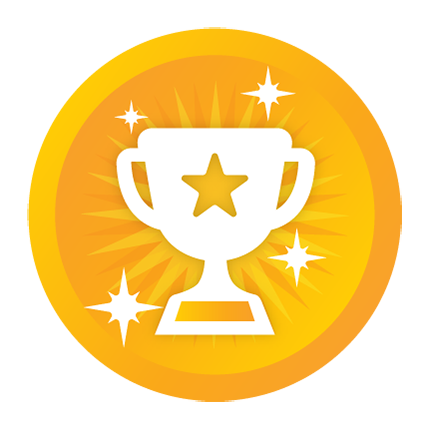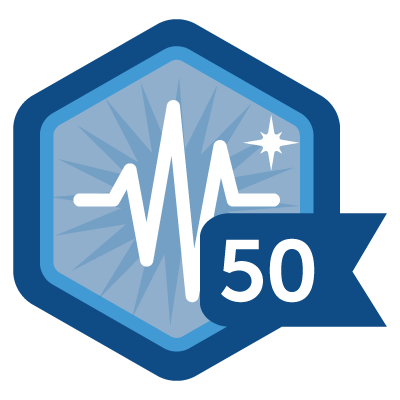My dad was a physicist from MIT who moved to San Diego to become a rocket scientist. He worked on propulsion systems at first. Then he invented a small lightweight capacitor that allowed satellites to stay in space (prior ones were too heavy), and enabled defibrillators to become portable. Then he went on to found his own capacitor company, Maxwell Technologies https://en.wikipedia.org/wiki/Maxwell_Technologies. So I decided to go into physics like my Dad. I attended University of California, San Diego and did my first two years as a physics major. I liked mechanics but astrophysics and plasma physics got me wondering if I really wanted to do that. Then quantum mechanics was really the turning point. I was just filling out the equations with angle brackets and vertical bars, etc. I knew the process for transforming, simplifying, and manipulating the equations but I really didn’t know what they meant. It was too abstract for me. But at the time (late 1970’s) holograms and lasers were becoming popular. And I had always like photography and optical illusions so I decided to switch majors to “Engineering Physics with a specialization in optics”. I had classes in the laser lab and that is where I got a really good intuitive feeling for what a Fourier transform is. The Fraunhofer diffraction pattern of a plane wave (laser) shining through an aperture pattern is the 2-D Fourier transform. I also learned about geometrical optics. I had a 14 month internship with the US Navy (as a civilian) working on algorithms for inverse synthetic aperture radar. Instead of radar being just a blip/dot on a screen we were able to detect the basic shape of the object. It was pretty crude in those days but we could tell if it was a ship or plane and size of the ship or plane by the shape and other attributes. I’m sure it’s advanced greatly since then in what they can resolve and determine. We used a DEC PDP-11 mini computer. I also learned to like programming there.
I then entered the Ph.D. program in the largest and best optical graduate school in the country at the Optical Sciences Center of the University of Arizona. They had a strong group in medical imaging and had just invented Digital Subtraction Angiography (which is now in every hospital) so I joined up with a professor in that sub-group. For a while I worked on a laser scanning ophthalmoscope but that kept breaking down so I switched to a radiology (angiography) project where I was working on tracking and measuring blood vessels in radiographs. We worked on a DEC VAX computer and if it ever was down, it was fixed within a day. So I finished up my Ph.D. in 1988 and in my final year I started interviewing. Optics was the highest paying major, and the College of Optics (as it’s now called) was the second largest department at the University of Arizona (after the medical school). I interviewed with a lot of companies but most of them specialized in one thing, such as fingerprint/palmprint authentication, missile tracking, semiconductor wafer inspection, etc. But two companies, the Procter & Gamble Company https://www.cincinnatimagazine.com/article/17-fun-facts-to-know-and-tell-about-procter-gamble/and Dupont had an extremely wide diversity of applications and projects I could work on due to the wide range of products they worked on. They were both great but I chose P&G because the group of people there were the friendliest. Also at P&G I would be the most knowledgeable one in the group (only one in imaging with the rest being computer scientists at that time in 1988) where as at Dupont I would have been the small fish in a big pond (lots of people there who were world class experts and I didn’t want to feel like the dummy in the group). One of my first projects at P&G was to determine how well Crest toothbrush bristles penetrated into the interproximal (between teeth) spaces. We had a brushing robot and stained the teeth with red dyed hair spray and I would see how much of the stain got removed. Another early project was to find the silicone particle size in Pert Plus (Rejoice in Asia) and Pantene shampoo in the factory. I’ve done most of my work in Fabric and Home Care (Tide, Ariel, Cascade, Dawn, Swiffer, Mr. Clean) and Baby and Feminine Care (Pampers, Always, etc.) though I’ve worked on nearly every major brand that we have (Bounty, Olay, Febreze, Gillette, Old Spice, Oral B, Braun, etc., around a hundred or so). Pampers diapers is our biggest brand, followed by Tide laundry detergent. We only make our own brands – we do not make any private label brands for stores (no house brands for Walmart, Costco, Kroger, etc.). Generally our images involve looking at the product itself, or the effect of the product doing its job. Quite often there are before and after usage images so we can determine how well the product worked. We also look at competitors’ products to make sure ours are always superior. I’ve worked on what some people would consider very VERY unusual images – just imagine how baby care and feminine care products are used! At P&G we’re used to working on sensitive products and no one is embarrassed (yes there are lots of men working on femcare products, in addition to women of course). However there were a few projects where I couldn’t even work on my computer in the public P&G office area. I had to go to a private conference room. I promise it’s not pornography, it’s just my job! A common project involves replacing human visual grading with image analysis, which is objective, more accurate, more precise, and more repeatable and quite often cheaper and faster than having to get humans to grade the images subjectively. We often look at stains and measure things like what is their color and size, and how did the color and size change after using our products to clean it. Shine, gloss, whiteness, and absorption are important for many of our products (Pantene shampoo, Crest toothpaste, etc.), so I’ve measured those attributes. Sometimes there are applications where we need to find things and count how many there are, measure their size, their color, their shape, their uniformity.
Sometimes we have existing instruments that can create an image like CT, MRI, or chemical instruments. But often we need to create a customized imaging rig optimized for the specific task at hand. So that requires that I know what kind of lighting, lenses, camera, geometry, mounting jigs, enclosures, etc. to use. My extensive background in optics, spectroscopy, and color science are very helpful for that. Usually a new light booth would be obtaining an image from a digital machine vision camera – I like the cameras from Lumenera. Sometimes we work with the machine shop in P&G to create the imaging light booth and other times we work with an outside machine vision vendor to create a custom booth to meet our specialized needs.
I can be a little more specific about projects for brands that P&G sold off (no longer owns). For Pur (water filters) I measured the porosity, surface area, and volume fraction in a microCT 3-D image of charcoal particles. For Thermacare (heat wrap) we used a thermal camera to measure the heat (temperature and uniformity from cell to cell) of the wraps themselves, and the temperature and spatial distribution of temperature on the skin after removal of a heat wrap that had been applied. For Iams (dog and cat food) I’ve looked at volume fraction of kibbles in packages from CT images. For Actonel (anti-osteoporosis drug) I looked at the porosity and connectivity of the trabecular bone. For Pringles I measured the spatial distribution of fat in the potato crisp. I’ve looked at hair count and length for a hair growth product we were working on. I’ve also looked at the volume of nasal turbinates in MRI images for an antihistamine product.
Many of my image analysis projects have resulted in numerical claims that we put onto packages, like Dawn’s “Cleans with 50% less scrubbing” and similar claims on Tide and Cascade packages. It’s nice to work on projects with such a big impact. One of the claims my image analysis enables could make $100 million dollars more in sales of the product. Not many people can say that. Many people work on some specialized project that may benefit a few hundred or few thousand people. How many people will benefit from what you do? My projects affect about 6 billion people (consumers of our products) across the globe. Over 90 percent of the world's population can buy P&G products. In the USA 99% of households have at least one P&G product. It’s nice to go into the grocery store and see a product I worked on and say “Yeah, I did that.” Sometimes my work ends up in patents. Gillette (our shaving brand) is located in the Boston area not far from the Mathworks and Gillette Stadium and I’ve done image analysis on razor blade cartridges.
I’ve also done a lot of signal analysis for our spectroscopists. They obtain 1-D signals (mostly, though sometimes 2-D) from their instruments such as FTIR or Raman spectroscopy instruments. I write code to take their signals and perform the special measurements they want like getting ratios of signal from certain wavenumbers or computing area under the curve, doing baseline correction, etc. I create a custom GUI interface where they can select the data files they want from a listbox and then batch process them and send the results to an Excel workbook. Usually these are specialized computations that they want to do that are not built-in to their instrument’s software.
After retirement from P&G last year, I continue to support the MATLAB answers forum and am on the Community Advisory Board. I’ve done very well as an investor. I’m making ten times more money from my investments than I ever did at P&G. So, I also donate a lot of my time and money to a handful of charities that interest me.


















